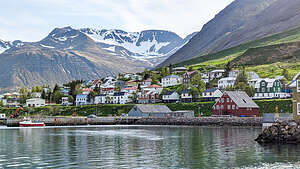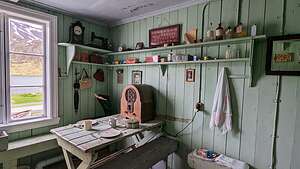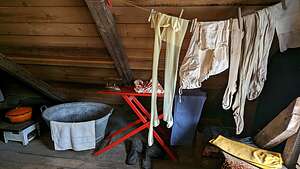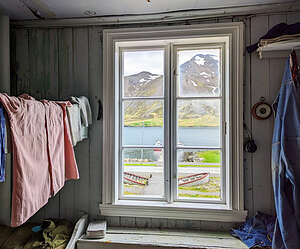- Home
- About
- Map
- Trips
- Bringing Boat West
- Migration West
- Solo Motorcycle Ride
- Final Family XC Trip
- Colorado Rockies
- Graduates' XC Trip
- Yosemite & Nevada
- Colorado & Utah
- Best of Utah
- Southern Loop
- Pacific Northwest
- Northern Loop
- Los Angeles to NYC
- East Coast Trips
- 1 Week in Quebec
- Southeast Coast
- NH Backpacking
- Martha's Vineyard
- Canadian Maritimes
- Ocracoke Island
- Edisto Island
- First Landing '02
- Hunting Island '02
- Stowe in Winter
- Hunting Island '01
- Lake Placid
- Chesapeake
- Provincetown
- Hunting Island '00
- Acadia in Winter
- Boston Suburbs
- Niagara Falls
- First Landing '99
- Cape Hatteras
- West Coast Trips
- Utah Off-Roading
- Maui
- Mojave 4WD Course
- Colorado River Rafting
- Bishop & Death Valley
- Kauai
- Yosemite Fall
- Utah Off-Road
- Lost Coast
- Yosemite Valley
- Arizona and New Mexico
- Pescadero & Capitola
- Bishop & Death Valley
- San Diego, Anza Borrego, Joshua Tree
- Carmel
- Death Valley in Fall
- Yosemite in the Fall
- Pacific Northwest
- Utah Off-Roading
- Southern CA Deserts
- Yosemite & Covid
- Lake Powell Covid
- Eastern Sierra & Covid
- Bishop & Death Valley
- Central & SE Oregon
- Mojave Road
- Eastern Sierra
- Trinity Alps
- Tuolumne Meadows
- Lake Powell Boating
- Eastern Sierra
- Yosemite Winter
- Hawaii
- 4WD Eastern Sierra
- 4WD Death Valley +
- Southern CA Deserts
- Christmas in Tahoe
- Yosemite & Pinnacles
- Totality
- Yosemite & Sierra
- Yosemite Christmas
- Yosemite, San Diego
- Yosemite & North CA
- Seattle to Sierra
- Southwest Deserts
- Yosemite & Sierra
- Pacific Northwest
- Yosemite & South CA
- Pacific Northwest
- Northern California
- Southern Alaska
- Vancouver Island
- International Trips
- Index
- Tips
- Books
- Photos/Videos
- Search
- Contact
Siglufjörður, Iceland
Wednesday, June 7, 2023 - 4:00pm by Lolo
50 miles and 1.25 hours from our last stop - 1 night stay
Travelogue
 SiglufjörðurAfter leaving Akureyri, we left the Ring Road and headed up the beautiful Trollaskagi Peninsula towards the quaint fishing village of Siglufjörður, the northernmost settlement in Iceland, less than 25 miles from the Arctic Circle.
SiglufjörðurAfter leaving Akureyri, we left the Ring Road and headed up the beautiful Trollaskagi Peninsula towards the quaint fishing village of Siglufjörður, the northernmost settlement in Iceland, less than 25 miles from the Arctic Circle.
The peninsula has the tallest mountains outside the Highlands, meaning it also has tunnels to cut through those mountains. In fact, there are three tunnels along the 50 miles from Akureyri to Siglufjörður. Some of them are as much as 7 miles long. Unlike the one we took into Akureyri, these were toll-free.
 SiglufjörðurThey were pretty scary though in that although they were two-way, they had only one lane, so if there was another car coming in our direction, we had to quickly get over to one of the pull-outs on our side.
SiglufjörðurThey were pretty scary though in that although they were two-way, they had only one lane, so if there was another car coming in our direction, we had to quickly get over to one of the pull-outs on our side.
However, whenever we weren’t inside a tunnel, the scenery along the drive was stunning.
 Sorting the day's catchBefore these tunnels were built in 2010, Siglufjörður was pretty much cut off from the rest of Iceland during the winter.
Sorting the day's catchBefore these tunnels were built in 2010, Siglufjörður was pretty much cut off from the rest of Iceland during the winter.
We pulled into Siglufjörður campground late afternoon. What a location!! Set at the end of a fjord 25 miles from the Arctic Circle, with colorful buildings and the harbor on one side, and amazing mountains on the other.
 SiglufjörðurThere was only one other camper there, a very friendly man from a village outside Reykjavik who loved coming here in the summer. He said he was originally from the island of Heimaey, off the southern coast of Iceland, or at least until the 1973 eruption of the Eldfell volcano, which destroyed 400 homes on the island, including his. Everyone was evacuated, and he never returned to the island.
SiglufjörðurThere was only one other camper there, a very friendly man from a village outside Reykjavik who loved coming here in the summer. He said he was originally from the island of Heimaey, off the southern coast of Iceland, or at least until the 1973 eruption of the Eldfell volcano, which destroyed 400 homes on the island, including his. Everyone was evacuated, and he never returned to the island.
 Artic Herb's PylsursWow! How do you top that story? All we had to offer was we are originally from New Jersey. Not quite as dramatic.
Artic Herb's PylsursWow! How do you top that story? All we had to offer was we are originally from New Jersey. Not quite as dramatic.
We strolled down to the harbor to watch the fisherman unload their catch for the day. It was fun watching them fling the fish through the air as they sorted them into various crates.
 Dining alfresco near the Arctic CircleSiglufjörður is still very much a fishing village, but it has declined significantly from its glory days of being the herring capital of the world back in the early 1900s.
Dining alfresco near the Arctic CircleSiglufjörður is still very much a fishing village, but it has declined significantly from its glory days of being the herring capital of the world back in the early 1900s.
During its heyday, it was a thriving boomtown of 10,000, and its herring accounted for over 20% of all of Iceland’s exports. it grew so rapidly that it was compared to the California Gold Rush, and it was even given the name the "Atlantic Klondike".
 Siglufjörður However, overfishing resulted in the almost disappearance of herring by the late 1960s and the town fell into decline. The processing plants were closed and many people left. Today the population is a little over 1,200.
Siglufjörður However, overfishing resulted in the almost disappearance of herring by the late 1960s and the town fell into decline. The processing plants were closed and many people left. Today the population is a little over 1,200.
Today the town remains dependent on fishing and is trying to promote tourism. The building of the tunnels through the mountains on the peninsula has helped make it more easily accessible. Still, it is not quite there yet in terms of crowds of tourists, but that’s why we liked it so much.
 Herring Era MuseumIt has become a bit more discovered though. The Netflix series Entrapped, about the mysterious murder of a cult victim was filmed in this tiny village.
Herring Era MuseumIt has become a bit more discovered though. The Netflix series Entrapped, about the mysterious murder of a cult victim was filmed in this tiny village.
There weren't that many options for dining and we had had a big lunch in Akureyri, so once again opted for Herb's famous German interpretation of Icelandic Pylsurs (in other words, bratwurst). Surprisingly, we weren’t getting tired of them yet.
 Herring Era MuseumIt was so scenic around our campsite, that we even convinced my desert-loving Herb to eat alfresco surrounded by the beauty of this lovely village. It was a bit chilly though. After all, this was the closest we had ever been to the Arctic Circle, and the closest we ever will be if it’s up to Herb.
Herring Era MuseumIt was so scenic around our campsite, that we even convinced my desert-loving Herb to eat alfresco surrounded by the beauty of this lovely village. It was a bit chilly though. After all, this was the closest we had ever been to the Arctic Circle, and the closest we ever will be if it’s up to Herb.
The next morning on our walk over to have breakfast at Aðalbakarí, we passed the village church with a bright blue house in front of it.
.thumbnail.jpg) Grana - the reduction factoryWe later found out that Herb's Icelandic friend John, who he went to Stevens Tech with, spent summers in that house. His parents owned it and his mom was a teacher's aid in the Siglufjordur elementary school. It sure is a small world.
Grana - the reduction factoryWe later found out that Herb's Icelandic friend John, who he went to Stevens Tech with, spent summers in that house. His parents owned it and his mom was a teacher's aid in the Siglufjordur elementary school. It sure is a small world.
Before leaving Siglufjordur, we visited the Herring Era Museum, considered one of the best museums in Iceland - although I had a hard time believing it was going to beat the Phallological Museum in Reykjavik. Herring are not as funny as phalluses, but I’ll keep an open mind.
 The museum buildings along the shorelineThe museum, which is a tribute to the town’s glory days as the herring capital of the world, is made up of three separate buildings. The first is the Boathouse in which there is a recreation of the town’s once bustling port, complete with dock and 11 boats of various types and sizes, which we were allowed to board and clamber about.
The museum buildings along the shorelineThe museum, which is a tribute to the town’s glory days as the herring capital of the world, is made up of three separate buildings. The first is the Boathouse in which there is a recreation of the town’s once bustling port, complete with dock and 11 boats of various types and sizes, which we were allowed to board and clamber about.
As we strolled along the pier, boarding various ships at the dock, we were transported back in time to this tiny village’s days as a bustling port with over 10,000 workers catching and processing herring. For a brief moment, I was a herring fisherman
 Herring Girls QuartersThe second building we went into was the Grana, a model of the original reduction factory that operated in Siglufjordur between 1919 and 1950. This is where men and machines transformed the herring into oil and fish-meal. The oil was used to light homes and streets before mineral oil was discovered and the fish-meal was an important component of animal feed (fodder for livestock) and an agricultural fertilizer
Herring Girls QuartersThe second building we went into was the Grana, a model of the original reduction factory that operated in Siglufjordur between 1919 and 1950. This is where men and machines transformed the herring into oil and fish-meal. The oil was used to light homes and streets before mineral oil was discovered and the fish-meal was an important component of animal feed (fodder for livestock) and an agricultural fertilizer
That’s when I turned to Herb and said, “Call me fish meal.” It took a minute before he realized my rather silly reference to the opening of Moby Dick.
 Herring Girls QuartersThe last building we entered was the Roaldsbrakki, a former Norwegian salting station built in 1907. This was where the herring that did not go to the reduction factories went to be salted to become human food, especially for the hungry European countries during the two World Wars.
Herring Girls QuartersThe last building we entered was the Roaldsbrakki, a former Norwegian salting station built in 1907. This was where the herring that did not go to the reduction factories went to be salted to become human food, especially for the hungry European countries during the two World Wars.
On the 3rd floor of the Roaldsbrakki (salting station building) were the living quarters for the “herring girls,” the women that came from all across Iceland and other Scandinavian countries to take jobs gutting, cleaning, and salting barrels of freshly caught fish.
 Herring Girls QuartersAll the men were either out at sea fishing or working in one of the reduction plants, so the herring girl fulfilled a role that was so crucial that the herring industry could not have succeeded without them. Go Herring Girls!!
Herring Girls QuartersAll the men were either out at sea fishing or working in one of the reduction plants, so the herring girl fulfilled a role that was so crucial that the herring industry could not have succeeded without them. Go Herring Girls!!
The rooms of the Róaldsbrakki, as part of the Herring Era Museum, have been restored, and the decor and personal items donated either by the former herring girls or their families.
 View from their windowThis was my favorite part of the entire museum. I’d much rather see how people of a bygone age lived than look at a fish meal producing machine.
View from their windowThis was my favorite part of the entire museum. I’d much rather see how people of a bygone age lived than look at a fish meal producing machine.
The rooms they slept in were very neat and cozy (aka small), with painted bunk beds, an ironing board, and a closet full of skirts, slips, stockings, and bathrobes.
Off the bedroom there was what I guess was a laundry room, with a tub to wash the clothes in and a clothes line with nylon stockings and other assorted clothing items.
In the kitchen there were coffee urns and teapots, flour and sugar tins, cups, toaster, a floral-painted bread box.
 Herring Girls quartersSpread out on top of several portmanteaus were album covers of Nordic troubadours of the time—and also of Harry Belafonte and Elvis Presley.
Herring Girls quartersSpread out on top of several portmanteaus were album covers of Nordic troubadours of the time—and also of Harry Belafonte and Elvis Presley.
The walls were decorated with photos of various film stars, such as Cary Grant, which made me nostalgic because he was my mom’s favorite.
It felt as if the girls had just temporarily stepped out and would be coming back soon, finding us snooping around their quarters.
But sadly, they won’t be coming back. The herring girl era ended in the summer of 1969 when the boats came back empty of herring.
What an informative and interesting museum, far exceeding our expectations, possibly ranking even higher in our minds than the penis museum in Reykjavik. Well, maybe I wouldn’t go that far.
- ‹ previous
- 19 of 30
- next ›
Siglufjörður location map in "high definition"
Javascript is required to view this map.
